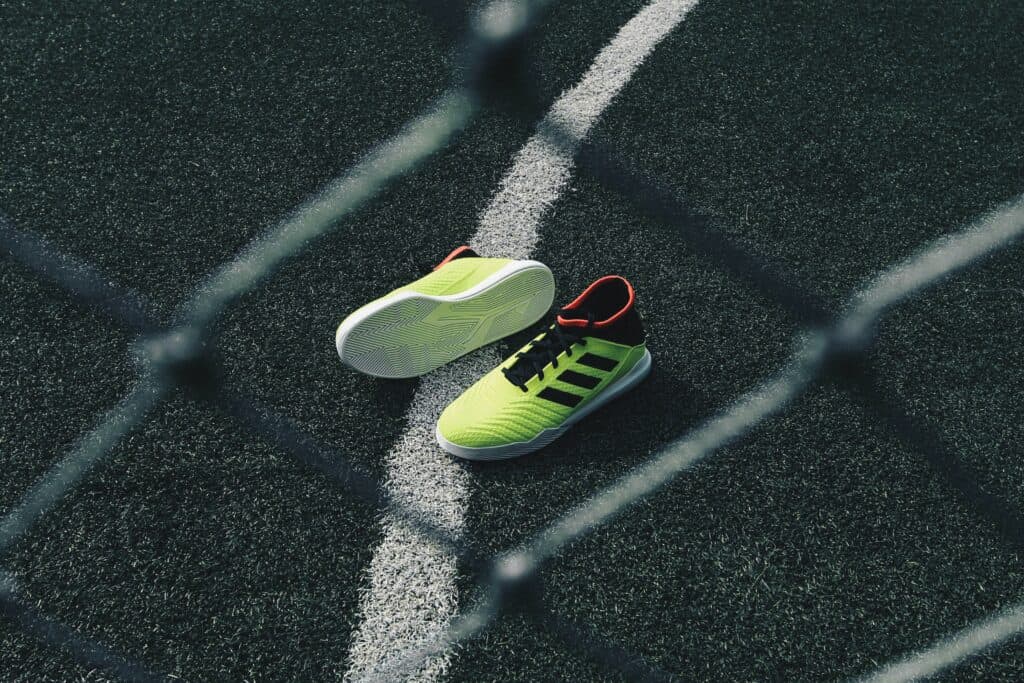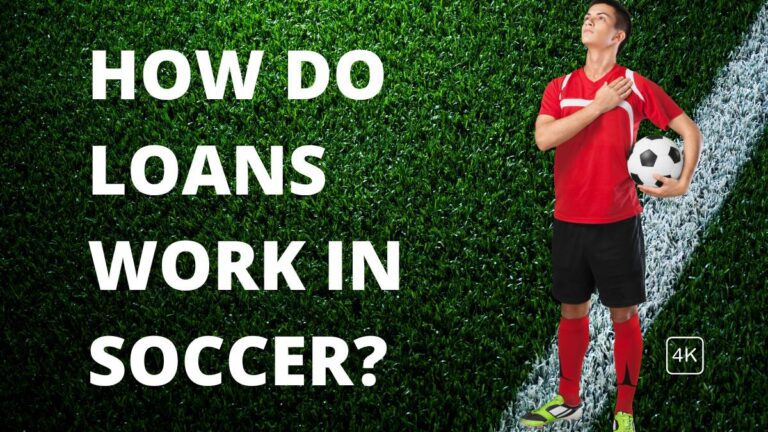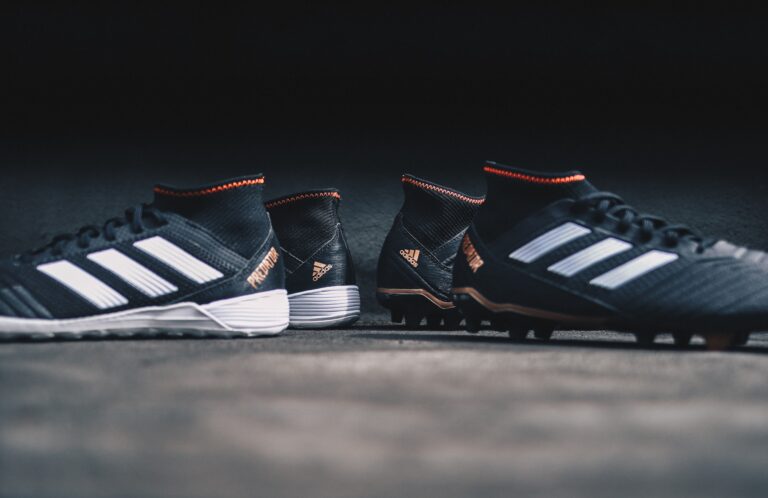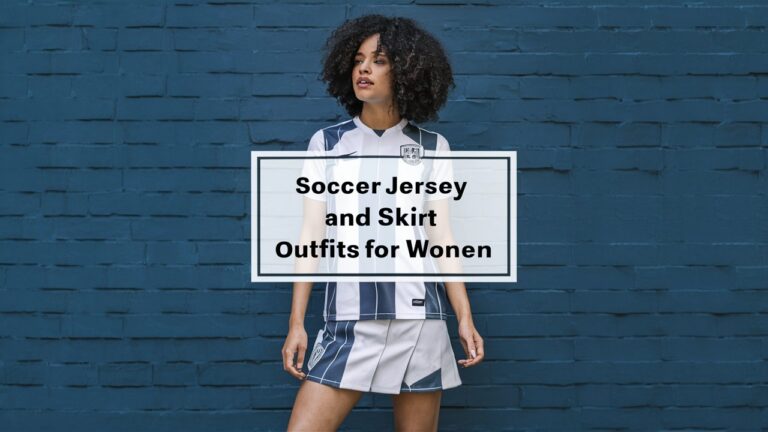How Should Soccer Cleats Fit: A Comprehensive Fitting Guide
Soccer is a game of skill, agility, and strategy. A good pair of soccer shoes is one of the most crucial elements of a player’s equipment. They are the only thing that connects the player to the playing surface, and hence it is essential to get the correct fitting soccer cleats to prevent injuries and improve performance.
If you want to read an in-depth guide on how to choose soccer cleats, then check out this article.
In this article, we will provide you with a comprehensive fitting guide and explain everything you need to know about how should soccer cleats fit.
So, How Should Soccer Cleats Fit You?

When it comes to get a perfect fit, you need to pay attention to numerous factors. You’ll have to know your foot measurements, correct cleat sizing, the type of cleat you want, etc. Let us look at each consideration separately to be able to make better decisions.
Foot Measurements
The first step in realizing how should soccer cleats fit is to determine your foot measurements. It is recommended to measure your feet in the afternoon as they tend to swell throughout the day. You can do this by tracing your feet on a piece of paper, measuring the length from the heel to the longest toe, and then comparing the measurement to a sizing chart. Remember to measure both feet as they might not be the same size.
Correct Sizing
Once you have determined your foot measurements, it’s time to find the correct sizing. Soccer cleats should fit snugly around your feet, with minimal movement. The toe box should allow your toes to move freely, and there should be enough space to wiggle your toes. However, they should not be too loose, as this can cause blisters, calluses, and discomfort.
On the other hand, they should not be too tight as this can restrict blood flow and cause pain. It is recommended to try on different brands and styles to find the perfect fit for your feet.
Types of Cleats
Soccer cleats come in three types: firm ground, soft ground, and turf shoes. Firm ground cleats are suitable for playing on natural grass, soft ground cleats are designed for wet and muddy fields, and turf shoes are for playing on artificial surfaces. Each type of cleat has a different stud configuration that is optimized for the playing surface.
Ankle Support
Soccer cleats should provide ample ankle support, especially for players who make sudden changes in direction or frequently jump. Look for cleats with a high-top design or ankle collar to provide additional support and stability.
Insole and Arch Support
The insole and arch support are essential components of soccer cleats. They provide cushioning and support for the foot and help prevent injuries such as plantar fasciitis. Look for cleats with a well-cushioned insole and arch support, especially if you have flat feet or high arches.
Toe Box and Heel Counter
The toe box should be roomy enough to allow your toes to move freely but not too loose to cause discomfort. The heel counter, on the other hand, should be snug to prevent your foot from sliding inside the cleat.
Breaking in Cleats
It is essential to break in your new soccer cleats before wearing them in a game. Since some soccer cleats usually run small, breaking into these cleats is an important step. This allows the cleats to mold to your feet, providing a more comfortable fit. Wear them for short periods initially, and gradually increase the duration until they feel comfortable.
If you want to learn more about how to break in your soccer cleats effectively, make sure to read our article on how to break in soccer cleats.
Playing Position and Playing Surface
Your playing position and playing surface should also be taken into consideration when selecting soccer cleats. For example, forwards need lightweight cleats for speed, while defenders require cleats with a sturdy upper for protection. Additionally, the playing surface can also affect the choice of cleats.
Cleaning and Maintaining Cleats
Cleaning and maintaining your soccer cleats can help prolong their lifespan. After each use, wipe them with a damp cloth to remove any dirt or debris. Avoid soaking them in water, as this can cause the leather to crack. Store them in a cool, dry place away from direct sunlight.
Conclusion
In conclusion, finding the perfect soccer cleats is crucial for preventing injuries and improving your performance on the field. Make sure to measure your feet, try on different brands and styles, and choose the correct size. Look for cleats with ample ankle support, a well-cushioned insole, and arch support.
The toe box should allow your toes to move freely, and the heel counter should be snug. Remember to break in your cleats before wearing them in a game and clean and maintain them to prolong their lifespan. Consider your playing position and playing surface when selecting soccer cleats.
In summary, soccer shoes, also known as soccer cleats, are an essential component of a player’s equipment. By following this comprehensive fitting guide, you can find the perfect pair of soccer cleats that provide a comfortable fit, ample support, and optimal performance. Whether you’re a beginner or a seasoned player, investing in the right pair of soccer cleats can make all the difference on the field.
Frequently Asked Questions (FAQs)
1. How much room should be in your soccer cleats?
When it comes to soccer cleats, the fit is crucial for comfort, performance, and safety. You want your cleats to fit snugly but not too tight, with enough space for your toes to wiggle. A general rule of thumb is to have about a quarter of an inch of space between your toes and the end of the cleats. This allows for enough room to prevent blisters and irritation, while still providing optimal control and traction on the field.
However, it’s important to note that everyone’s feet are unique, and what works for one person may not work for another. Some people may prefer a tighter fit for better ball control, while others may prefer a looser fit for comfort. Ultimately, the best way to determine the right fit for you is to try on several pairs and walk around in them to see how they feel.
2. Should soccer cleats be bigger or smaller?
Soccer cleats should not be too big or too small. A good fit is essential for optimal performance and safety on the field. If your cleats are too big, your feet will slide around inside the shoes, making it difficult to control the ball and maintain balance. This can increase the risk of injury, as well as cause blisters and discomfort.
On the other hand, if your cleats are too small, you may experience pinching or squeezing around your toes, which can also cause discomfort and increase the risk of blisters. Additionally, if your toes are cramped in the cleats, you may not have enough control over the ball or be able to move as quickly on the field.
3. How do I know if my soccer cleats are too big?
If your soccer cleats are too big, you may notice that your feet are slipping around inside the shoes. This can cause you to lose control of the ball and make it more difficult to change directions or stop quickly. You may also notice blisters forming on your feet due to friction from the shoes rubbing against your skin.
To determine if your cleats are too big, try them on and walk around in them. If your feet slide around inside the shoes, or you can fit more than one finger between your heel and the back of the cleats, they may be too big.
4. How do you know if soccer cleats are too small?
If your soccer cleats are too small, you may experience discomfort or pain, particularly around your toes. You may also notice that your feet feel cramped inside the shoes, making it difficult to move or change direction on the field.
To determine if your cleats are too small, try them on and walk around in them. If your toes feel pinched or squeezed, or you can’t wiggle them freely inside the shoes, they may be too small. Additionally, if you notice blisters forming on your toes or heels, this may be a sign that your cleats are too small and causing friction against your skin.







